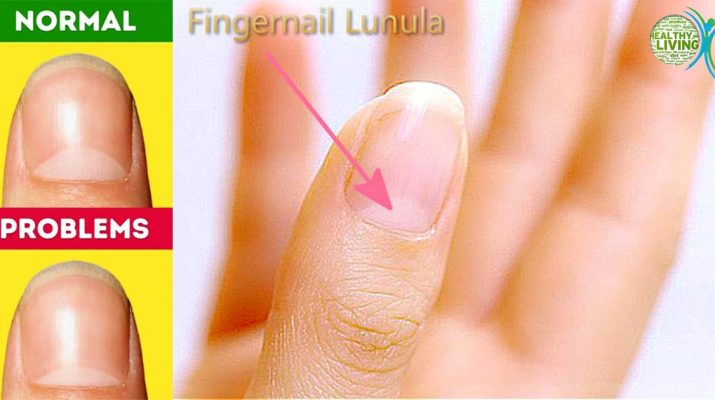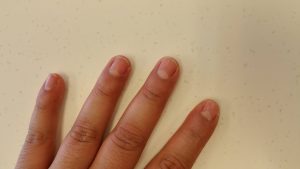Human bodies have an ability to inform us about the condition of our health. We can notice if our nutrient ranks are on the good level through the skin appearance, hair loss, the speed of wound healing, and blemishes.
Also, these signs tell us about our microbiome, food intolerance, even severe issues such as cancer or diabetes. You have probably never paid much attention to the lunula.
Lunula is that white half-moon on your fingernails. The lunula provides us with important signs about our health.
More About Lunula
Lunula seems like a part of your nail, but it is on the surface of the skin, located under the nail. It serves as a protection of the sensible blood vessels. All people have lunula, even though it cannot always be seen on every finger. Most of the people can see the lunula on their thumbs. It has a role in the form of the fingernails and their growth. If the lunula is harmed in any way, it may change the nail progress forever, in some cases, it can stop the growth.
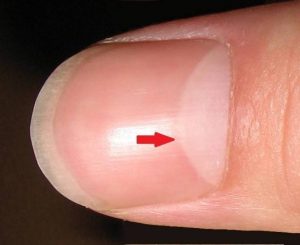
How Does Lunula Affect Your Health
Lunula’s size, form and color are 3 ways of a warning what is going on with your health, according to a 1996’s study published in “Journal of the Academy of Dermatology.” If the lunula is healthy and normal it has a shape as a half moon, it is fair, and covers a fifth of the nail. You should visit your doctor or health care practitioner if you see some of the following lunula changes.
Lunula Size
As we have previously said, the size of the lunula should be a 5th of your nail. If it is bigger, or smaller, it may be worrying:
Macrolunula:
This is how an enlarged lunula looks. People from India see it as normal. On the other hand, it may be a symptom of endocrine disorders, like hyperthyroidism.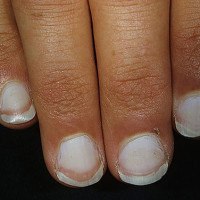
Microlunula and anolunula:
This is how a small or non-existent lunula looks. People from Africa see this as normal. Also, it may be related to the age, but there are some other issues linked to it:
- Atherosclerosis
- Chromosomal disorders
- Nail issues Rheumatoid Arthritis
- Hypothyroidism and hyperthyroidism
- Injury of the nerves
- HIV
- Anemia and malnutrition
- Renal failure
- Nail issues
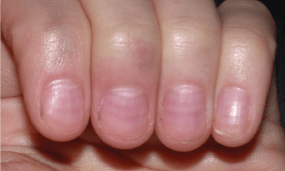
Lunula Form
The lunula affects the nail growth, so if the form is not good, there is a possibility of you growing deformed nails. If something is not right, the form of the lunula may be square or triangular. Of course, there are reasons behind lunula’s changed form:
- Turner’s syndrome may cause deformities, ache, and irritation. In most cases, it is inherited.
- Chromosomal illnesses such as Down Syndrome, Patau Syndrome, and Edward Syndrome.
- Nail damage
Lunula Color
The color of the lunula (lunar dyschromia) should be fair, even though it is not unusual for people with dark skin to have a bluish color. If you notice any of the next colors on your lunula, you should visit your doctor in order to be sure that everything is alright with your health.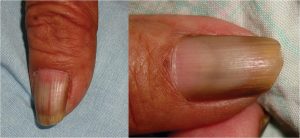
Red spots may mean vitiligo, alopecia, areata, or psoriasis. Also, it may be a sign of deformity illnesses and nail dystrophy.
Blue is often a result of drug intakes, such as Exlax, chemotherapy medicine, and some other HIV and cancer meds. The blueish lunula is linked as well with Wilson’s disease and Methemoglobinemia.
The yellow lunula is a result of exposure to pesticides and insecticides.
A white lunula could say your health is at risk. It is known as Leukonychia too and is noticed in people with the nephrotic syndrome, chronic renal failure, congestive heart failure, cirrhosis, and diabetes.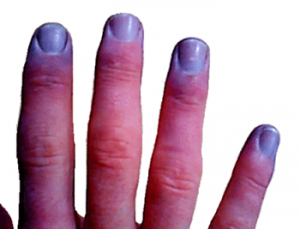
The Main Point
As shown above, the necessary information about your health is provided by your nails, especially your lunula. However, you should not be immediately afraid if you see some of the above-mentioned symptoms. You are advised to check out other symptoms of the possible illness, and of course, visit your doctor.
It would be great if you share this information with your close circle of people, so they would also be informed about the importance of their nails.
Source: The Hearty Soul

